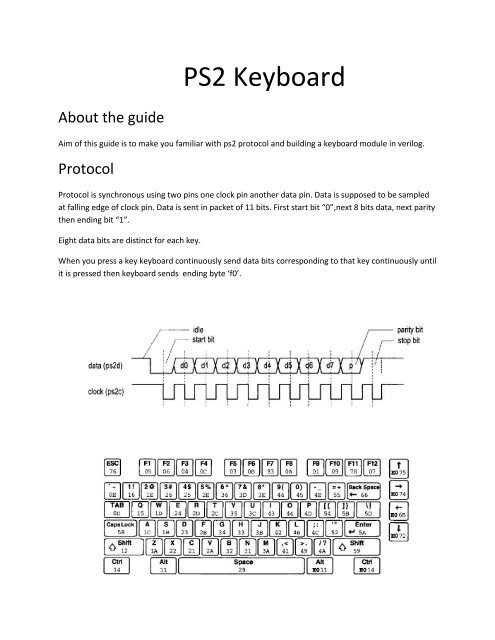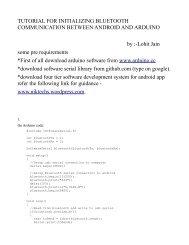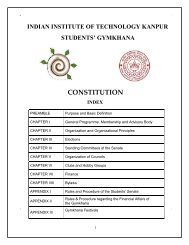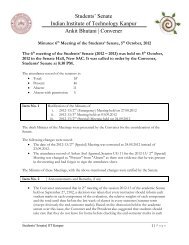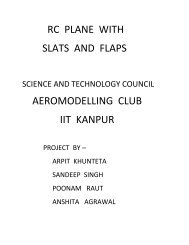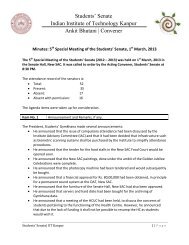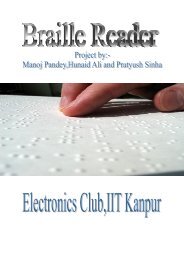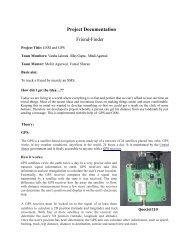PS/2 Keyboard
PS/2 Keyboard
PS/2 Keyboard
Create successful ePaper yourself
Turn your PDF publications into a flip-book with our unique Google optimized e-Paper software.
<strong>PS</strong>2 <strong>Keyboard</strong><br />
About the guide<br />
Aim of this guide is to make you familiar with ps2 protocol and building a keyboard module in verilog.<br />
Protocol<br />
Protocol is synchronous using two pins one clock pin another data pin. Data is supposed to be sampled<br />
at falling edge of clock pin. Data is sent in packet of 11 bits. First start bit “0”,next 8 bits data, next parity<br />
then ending bit “1”.<br />
Eight data bits are distinct for each key.<br />
When you press a key keyboard continuously send data bits corresponding to that key continuously until<br />
it is pressed then keyboard sends ending byte ‘f0’.
For example if 'a' is pressed then 1c will be transmitted multiple times and bytes received are<br />
1c,1c,1c...........1c,f0.If shift then a is pressed then bytes transmitted will be<br />
12,12...12,1c,....1c,f0,12,......,12,f0.<br />
Verilog Code:-<br />
module keyboard(<br />
input wire clk, // Clock pin form keyboard<br />
input wire data, //Data pin form keyboard<br />
output reg [7:0] led //Printing input data to led<br />
);<br />
reg [7:0] data_curr;<br />
reg [7:0] data_pre;<br />
reg [3:0] b;<br />
reg flag;<br />
initial<br />
begin<br />
b
Tips:-<br />
1) Add "NET "[<strong>Keyboard</strong> clock pin]" CLOCK_DEDICATED_ROUTE = FALSE;" to your constraint file.<br />
2) Pull up both clock and data pins in your constraint file.<br />
3) Scan code send by keyboard are not ascii code you must manipulate it according to your use.


